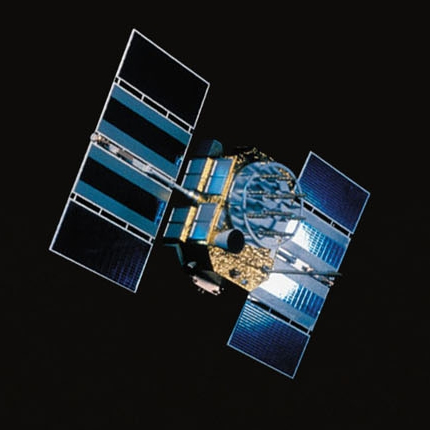
Command and control of the second GPS Block IIF satellite has been turned over to the 50th Space Wing’s 2nd Space Operations Squadron (2SOP) at Schriever Air Force Base, Colorado, today (August 22, 2011).
The Space and Missile Systems Center’s (SMC) GPS Directorate, located at Los Angeles Air Force Base, retained control of the satellite during a 30-day on-orbit checkout period before the hand-off to 2 SOPS.
Command and control of the second GPS Block IIF satellite has been turned over to the 50th Space Wing’s 2nd Space Operations Squadron (2SOP) at Schriever Air Force Base, Colorado, today (August 22, 2011).
The Space and Missile Systems Center’s (SMC) GPS Directorate, located at Los Angeles Air Force Base, retained control of the satellite during a 30-day on-orbit checkout period before the hand-off to 2 SOPS.
Launched on July 16 and now called SVN-63, the next-generation GPS IIF satellite built by Boeing is the newest satellite to join the active 31-satellite GPS constellation. It will provide improved accuracy through advanced atomic clocks, a longer design life than legacy GPS satellites, and a new third civil signal, L5, that will eventually benefit commercial aviation and safety-of-life applications.
Last week, 2SOPS reported that it would swap out an underperforming GPS satellite with an on-orbit spare.
During late May, 2 SOPS analysts began noticing signs that the atomic clock on Space Vehicle Number 30 (SVN-30), a GPS Block IIA satellite, was no longer maintaining the necessary standard of performance. So, along with their civilian partners from Boeing and the Aerospace Corporation, 2SOPS engineers began developing a plan to recall SVN-35 back into service to replace the ailing SVN-30.
SVN-35, also a Block IIA satellite, had been decommissioned from active service back in 2009 to make room in the constellation for the launch and eventual deployment of the latest new GPS Block IIR vehicle.
Even while it was removed from the almanac of the active constellation, SVN-35 maintained accurate timing and navigation signals; so, when the need arose for a spare, 2 SOPS analysts knew just where to go.
“We keep on-orbit spares for exactly this purpose,” said Lt. Col. Jennifer Grant, 2 SOPS commander. "The robustness of our current constellation and the recent completion of the Expandable 24 architecture provide us with the flexibility to perform replacements like this with minimal impact to global users.”
The Expandable 24 design increases global GPS coverage by optimizing the location of GPS satellites in space. SVN-35 will replace a satellite residing in an expanded slot of the constellation.
The replacement of SVN-30 marked the second time in the more than 25-year history of the GPS program that operators have transitioned a decommissioned vehicle back to active status.
“We’ve started moving SVN-35 from its decommissioned location to an active slot," said Capt. Frankie Reddick, 2 SOPS assistant director of operations. "During the next week, we’ll test the vehicle and if it’s still performing like it was when we turned it on back during June, we’ll set it healthy to users as it is moving."
Lt. Col. Dean Holthaus, 2 SOPS director of operations, noted that SVN-35 — launched in 1993, with a design life of 7.5 years — has surpassed its expected lifespan by 11 years.





